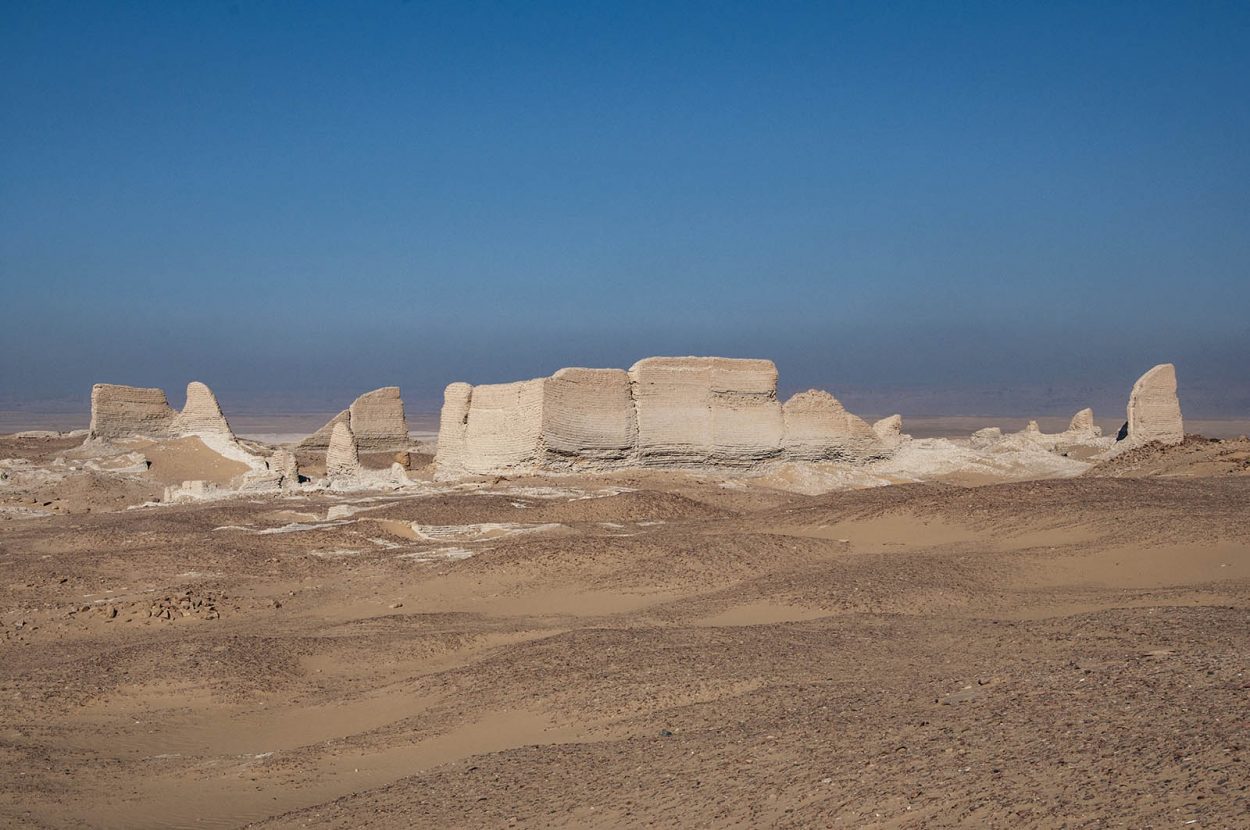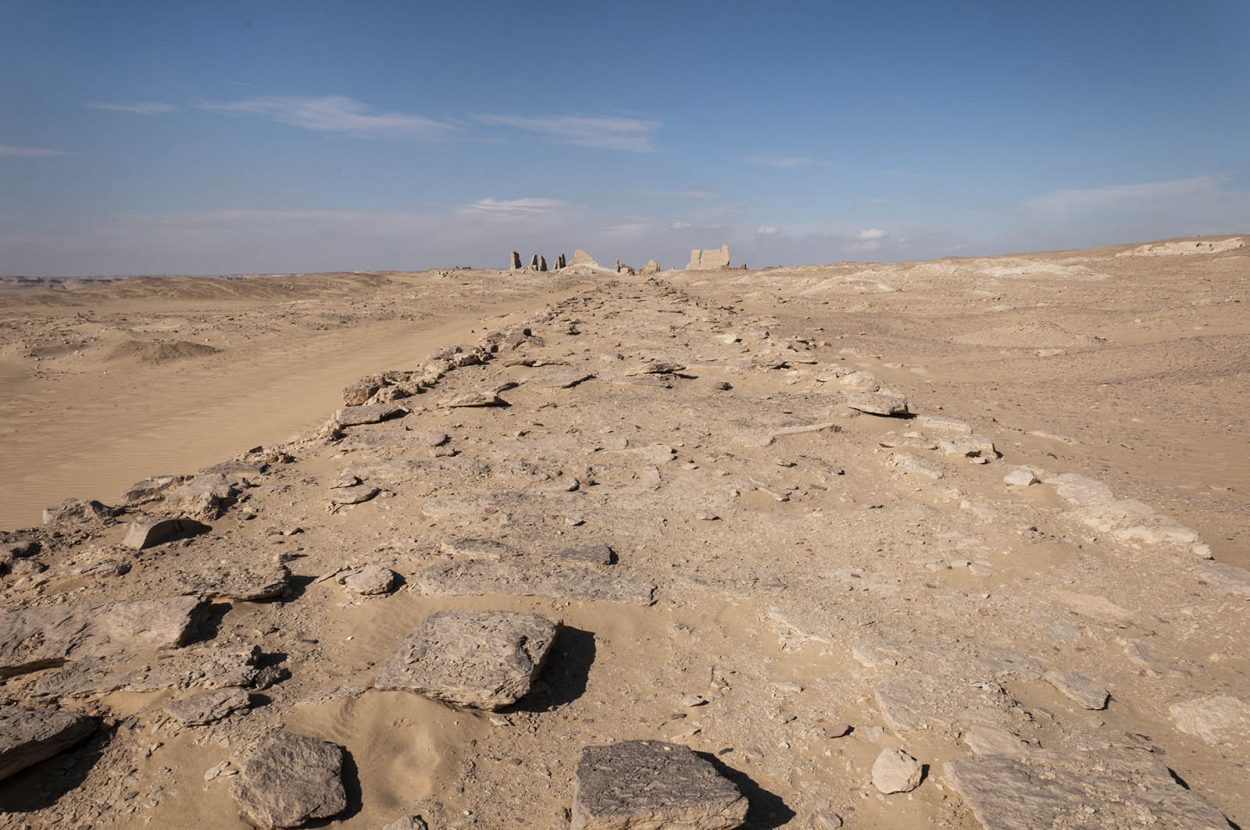Soknopaiou Nesos, also called Dimeh es-Seba, is an ancient temple complex and settlement associated with the Graecised deity of Soknopaios (Sobek neb Pai), who was a local form of the Ancient Egyptian crocodile-headed god Sobek.
Sobek was generally represented in the form of a crocodile or as a human with a crocodile head, associated with pharaonic power, fertility, healing, and protective qualities for the dangers represented by the Nile.
In Ptolemaic and Roman Egypt, a local monograph called the “Book of the Faiyum” gives mention of the journey made by Sobek-Ra with the movement of the sun through the sky, and Sobek’s role in creation as a manifestation of Ra as he rises from the primal waters of Lake Moeris (present-day Lake Qarun).
Soknopaiou Nesos is located in the desert north of Lake Moeris in the El-Fayyum Oasis, where it was founded around 100-50 BC during a period of land reclamation around El-Fayyum by the ruling Ptolemies.
Dating of the site is based on a treasure trove of papyri that date from 50 BC to AD 250, giving archaeologists a glimpse into the everyday life of the settlement and the religious cult practices of the temple.
Soknopaiou Nesos played an important role in the regional economic system for state administration, and as a major employer of cult staff and wab-priests who served the temple in five separate phyle (each phyle consisting of 30 men) alternately over a lunar month.
Soknopaiou Nesos consists of a temenos (sacred enclosure) containing two contiguous sanctuaries connected by an open-air courtyard that formed the nucleus of the main temple complex. Within the temenos are several supporting mud-brick structures which functioned as priests’ houses, workshops, administrative buildings, and subsidiary temples for worship.
Leading up to the temenos was a dromos, a raised road or platform that divided the settlement in two for ritual processions during feast days. Excavations alongside the dromos have revealed many residential structures, where finds include fragmentary wall-paintings, pottery, agricultural equipment, and numerous examples of papyri and ostraca in Demotic and Greek.
Papyrological evidence suggests that Soknopaiou Nesos was abandoned around AD 230, although the reason for this is not entirely clear. It may have succumbed to a loss in pilgrim revenue over its remote location, or possibly from a dwindling interest in the cult worship of Soknopaios.
Header Image Credit : HemikRania – iStock






